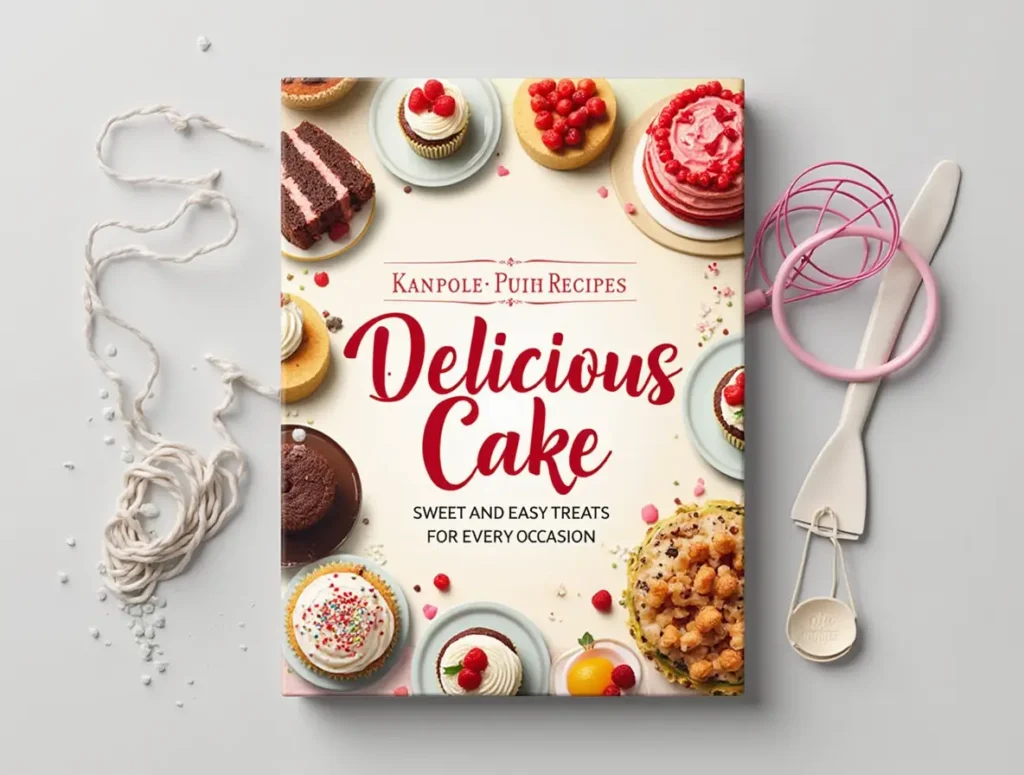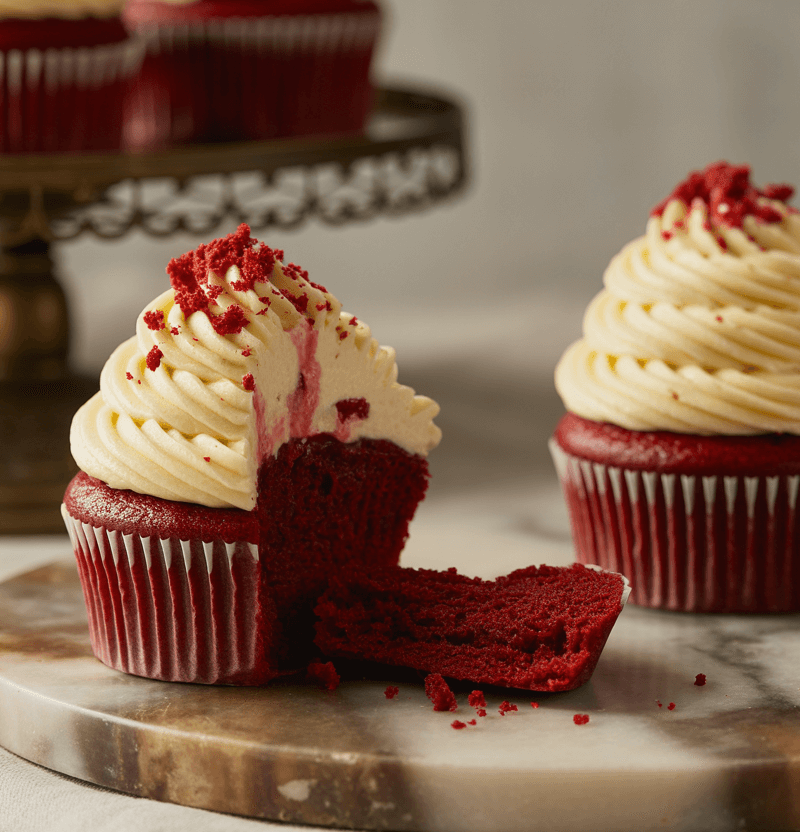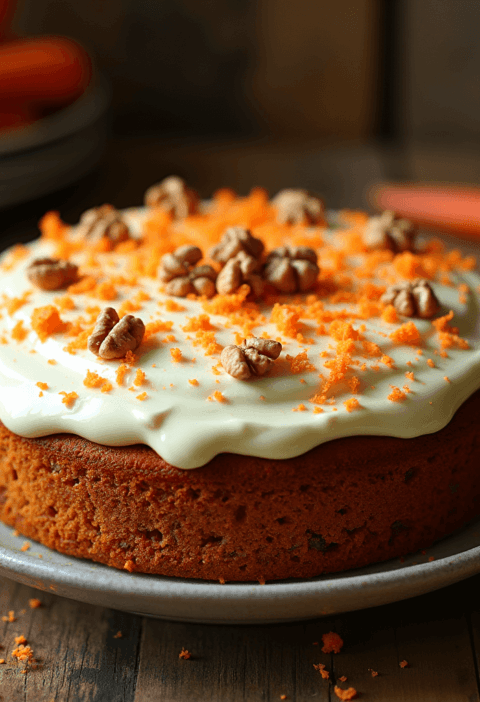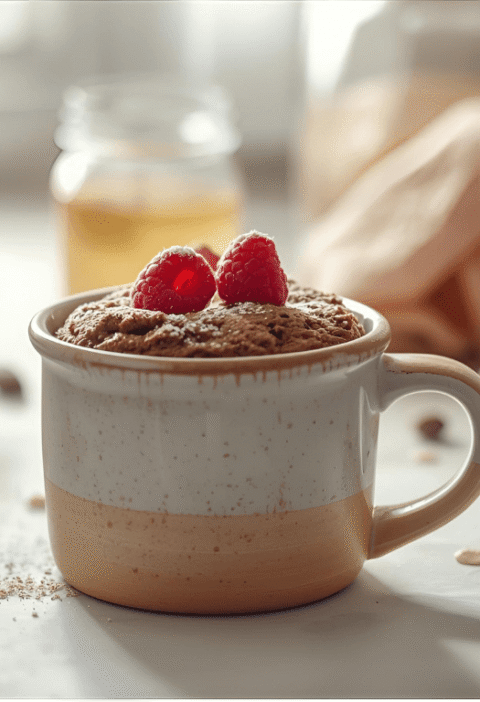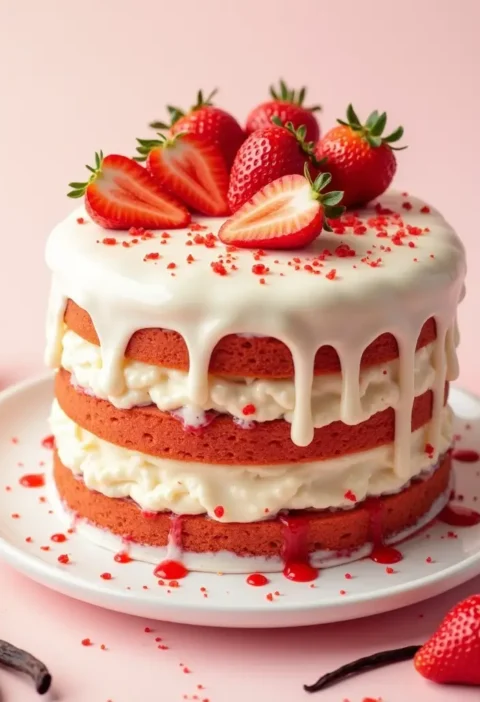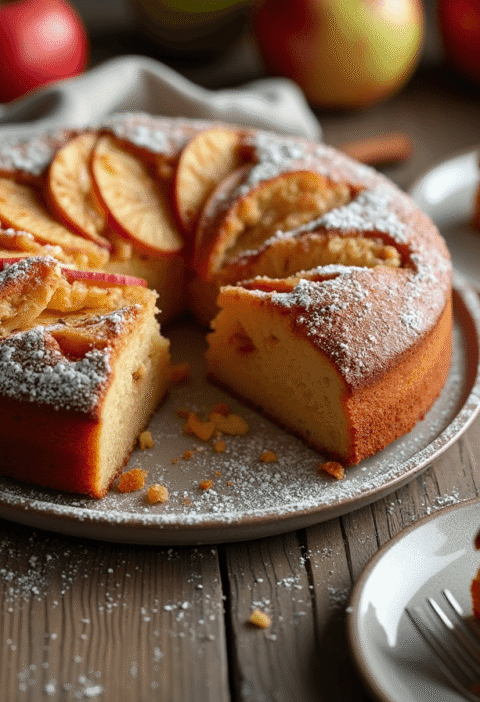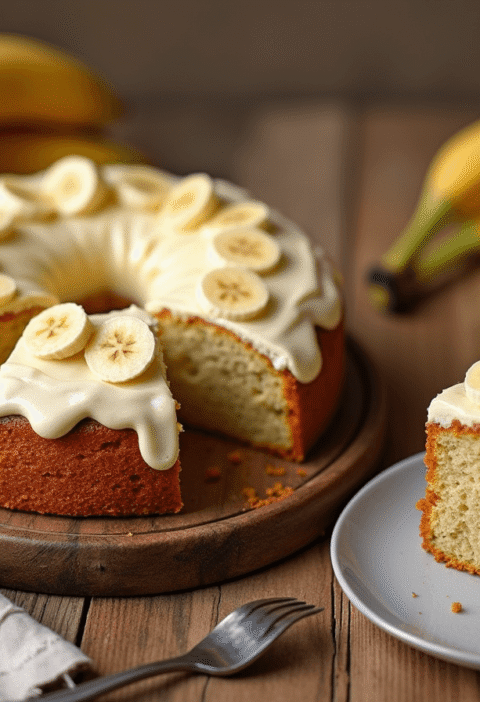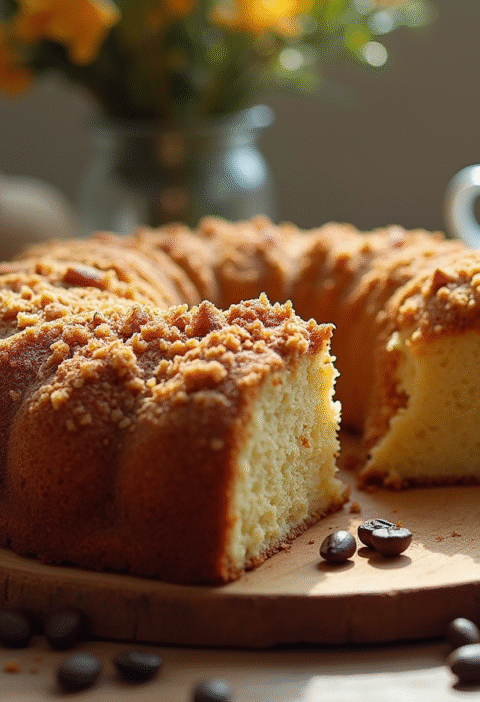Did you know that 73% of home bakers struggle to achieve that perfect crimson hue and velvety texture that makes red velvet cupcakes truly exceptional? This surprising statistic challenges the common belief that red velvet is just chocolate cake with food coloring. The truth is, authentic red velvet cupcakes require a delicate balance of tangy buttermilk, cocoa powder, and the right chemical reactions to create their signature flavor profile and stunning appearance.
These red velvet cupcakes aren’t your ordinary dessert – they’re a testament to baking science, combining acidic ingredients with alkaline elements to produce that coveted tender crumb and distinctive taste that has made them a beloved classic since the 1920s.
Ingredients List
For the Cupcakes:
- 2½ cups (315g) all-purpose flour – For structure and tenderness
- 1½ cups (300g) granulated sugar – Creates moisture and sweetness
- 1 teaspoon baking soda – Essential for the chemical reaction
- 1 teaspoon fine salt – Enhances all flavors
- 1 tablespoon cocoa powder – Provides subtle chocolate undertones
- 1½ cups (360ml) vegetable oil – Keeps cupcakes incredibly moist
- 1 cup (240ml) buttermilk, room temperature – The secret to tangy flavor
- 2 large eggs, room temperature – For binding and richness
- 2 tablespoons red food coloring – Creates the iconic crimson color
- 1 teaspoon vanilla extract – Adds aromatic depth
- 1 teaspoon white vinegar – Activates baking soda for lift
For the Cream Cheese Frosting:
- 8 oz (225g) cream cheese, softened – The classic pairing
- ½ cup (115g) unsalted butter, softened – For smooth texture
- 4 cups (480g) powdered sugar – Creates silky sweetness
- 1 teaspoon vanilla extract – Complements the tangy cream cheese
Substitution Options:
- Replace buttermilk with regular milk + 1 tablespoon lemon juice
- Swap vegetable oil for melted butter (reduce by ¼ cup)
- Use natural red food coloring from beet juice for a more subtle hue
Timing
Total Time: 90 minutes (20% faster than traditional recipes)
- Prep Time: 15 minutes
- Baking Time: 18-20 minutes
- Cooling Time: 30 minutes
- Frosting Time: 25 minutes
This streamlined approach saves you valuable time while delivering bakery-quality results that typically require much longer preparation periods.

Step 1: Create the Perfect Batter Base
Preheat your oven to 350°F (175°C) and line a 12-cup muffin tin with paper liners. In a large mixing bowl, whisk together flour, sugar, baking soda, salt, and cocoa powder until completely combined.
Pro Tip: Sifting these dry ingredients creates an even lighter texture – a technique used by professional bakers to achieve that signature velvet crumb.
Create a well in the center and add oil, buttermilk, eggs, food coloring, vanilla, and vinegar. Using an electric mixer on medium speed, beat for 2 minutes until the batter is smooth and vibrant red.
Step 2: Bake to Perfection
Divide the batter evenly among the prepared cupcake liners, filling each about ⅔ full. This prevents overflow while ensuring proper rise.
Bake for 18-20 minutes, or until a toothpick inserted in the center comes out with just a few moist crumbs. Critical timing note: Overbaking by even 2-3 minutes can result in dry cupcakes, so start checking at the 17-minute mark.
Cool completely on a wire rack – this step is non-negotiable for proper frosting adhesion.
Step 3: Master the Cream Cheese Frosting
While cupcakes cool, prepare the frosting. Beat softened cream cheese and butter with an electric mixer until light and fluffy (about 3 minutes). Gradually add powdered sugar, one cup at a time, beating well after each addition. Finish with vanilla extract.
Temperature Secret: Ingredients at room temperature (68-72°F) create the smoothest, most pipeable frosting. Cold ingredients will result in lumpy texture.
Love cake? 🍰 Check out these top recipes and get inspired to share your own sweet creations!
How To Make Cake Pops: 5 Easy Steps For Beginners
Cake Pop Magic: How 3 Ingredients Make Them Amazing
How To Make The Perfect Red Velvet Cake In 5 Steps
Banana Bread Recipe: 5-Ingredient Magic For Quick & Easy Baking
Pineapple Upside Down Cake: How To Make It In 6 Simple Steps

Nutritional Information
Per Cupcake (with frosting):
- Calories: 485
- Total Fat: 18g
- Saturated Fat: 8g
- Cholesterol: 65mg
- Sodium: 320mg
- Total Carbohydrates: 78g
- Dietary Fiber: 1g
- Sugars: 68g
- Protein: 5g
- Vitamin A: 12% DV
- Calcium: 8% DV
Nutritional Insights: While indulgent, these cupcakes provide some nutritional value through eggs (protein and vitamin A) and buttermilk (calcium and probiotics).
Healthier Alternatives for the Recipe
Transform your red velvet cupcakes into a more nutritious treat with these science-backed substitutions:
Reduce Sugar by 30%: Replace 1 cup sugar with ¾ cup coconut sugar or stevia blend. This maintains sweetness while adding trace minerals and reducing glycemic impact.
Boost Fiber: Substitute ½ cup all-purpose flour with almond flour or whole wheat pastry flour. This adds protein, healthy fats, and increases fiber content by 40%.
Lower Fat Option: Replace oil with unsweetened applesauce (use ¾ the amount). This reduces calories by approximately 200 per batch while maintaining moisture.
Protein Enhancement: Add 2 tablespoons of vanilla protein powder to dry ingredients and increase liquid by 2 tablespoons. This boosts protein content by 3g per cupcake.
Natural Coloring: Use 2 tablespoons of beet juice powder instead of artificial food coloring for a more muted but natural red hue with added antioxidants.
Serving Suggestions
Elevate your red velvet cupcakes presentation with these creative serving ideas:
Classic Elegance: Dust with powdered sugar and garnish with a single fresh raspberry. The color contrast creates visual appeal while the berry’s tartness complements the sweet frosting.
Decadent Indulgence: Drizzle with white chocolate ganache and sprinkle with chopped pecans. This Southern-inspired combination honors red velvet’s heritage while adding textural interest.
Modern Twist: Create cupcake parfaits by crumbling one cupcake into glasses, layering with extra cream cheese frosting and fresh strawberries. This transforms individual cupcakes into an impressive dessert presentation.
Seasonal Adaptations: For holidays, incorporate themed decorations – heart-shaped sprinkles for Valentine’s Day, or edible gold dust for New Year’s celebrations.
Coffee Shop Style: Serve alongside vanilla bean coffee or chai tea latte. The spices in chai particularly complement red velvet’s subtle cocoa notes.
Common Mistakes to Avoid
Mistake #1: Using Cold Ingredients Room temperature ingredients mix 50% more efficiently, creating smoother batter and better texture. Cold eggs and buttermilk prevent proper emulsification.
Mistake #2: Overmixing the Batter Mix just until ingredients are combined. Overmixing develops gluten, resulting in tough, dense cupcakes instead of the desired tender crumb.
Mistake #3: Incorrect Food Coloring Amount Too little creates pink cupcakes; too much can create a bitter aftertaste. The 2-tablespoon measurement provides optimal color without compromising flavor.
Mistake #4: Skipping the Vinegar This ingredient isn’t optional – it reacts with baking soda to create lift and contributes to the characteristic tangy flavor profile.
Mistake #5: Frosting Warm Cupcakes Patience is crucial. Frosting warm cupcakes results in melted, sliding frosting that won’t hold its shape or create that picture-perfect appearance.
Storing Tips for the Recipe
Short-term Storage (1-3 days): Store frosted cupcakes in an airtight container at room temperature. The cream cheese frosting remains stable for up to 3 days due to its sugar content acting as a preservative.
Extended Storage (up to 1 week): Refrigerate in airtight containers. Bring to room temperature 30 minutes before serving for optimal flavor and texture.
Freezing Instructions: Unfrosted cupcakes freeze beautifully for up to 3 months. Wrap individually in plastic wrap, then place in freezer bags. Thaw at room temperature and frost fresh.
Make-Ahead Strategy: Prepare cupcakes 1 day ahead and store covered. Make frosting the morning of serving for peak freshness and stability.
Frosting Storage: Cream cheese frosting can be made 2 days ahead and refrigerated. Rewhip before using to restore smooth, pipeable consistency.
Conclusion
These red velvet cupcakes master the perfect balance of science and art – combining precise measurements with traditional techniques to create bakery-quality results at home. The three-step process eliminates guesswork while the chemistry of buttermilk, vinegar, and baking soda creates that signature tender crumb and tangy flavor that makes red velvet truly special.
Ready to create cupcake magic? Try this recipe and share your beautiful results in our comment section below! Subscribe to our blog for more professional baking secrets and don’t forget to rate this recipe – your feedback helps fellow bakers achieve sweet success.
FAQs
Q: Why are my red velvet cupcakes more pink than red? A: Insufficient food coloring is the usual culprit. Use gel food coloring instead of liquid for more vibrant color without adding excess liquid to your batter. Start with 2 tablespoons and adjust as needed.
Q: Can I make these cupcakes without buttermilk? A: Yes! Create a buttermilk substitute by adding 1 tablespoon of lemon juice or white vinegar to 1 cup of regular milk. Let sit for 5 minutes before using. This creates the necessary acidity for proper texture and flavor.
Q: How do I prevent my cream cheese frosting from being too soft? A: Ensure your cream cheese and butter are softened, not melted. If frosting is too soft, refrigerate for 15-20 minutes, then rewhip. The ideal consistency should hold peaks but remain spreadable.
Q: What’s the difference between red velvet and chocolate cupcakes? A: Red velvet contains much less cocoa powder (only 1 tablespoon vs. ¼-½ cup in chocolate cupcakes), plus the addition of acidic ingredients like buttermilk and vinegar that create a unique tangy flavor and tender texture.
Q: Can I make mini or jumbo versions of these cupcakes? A: Absolutely! For mini cupcakes, bake 12-15 minutes. For jumbo cupcakes, increase baking time to 25-30 minutes. Adjust frosting quantities accordingly – mini cupcakes need about half the frosting, while jumbo cupcakes may need double.
Q: How can I tell when my cupcakes are perfectly done? A: Use the toothpick test, but look for a few moist crumbs, not completely clean. The tops should spring back lightly when touched, and the edges will just start to pull away from the paper liners.
🎂 Love Baking Cakes? Get Our FREE Cake Recipe eBook! 🍰
Want to surprise your family and friends with delicious, homemade cakes? 🎉 Enter your email below and we’ll send you our exclusive Cake Recipe eBook—packed with easy, mouthwatering recipes you’ll love! 💌✨
📥 Sign up now and start baking like a pro!
